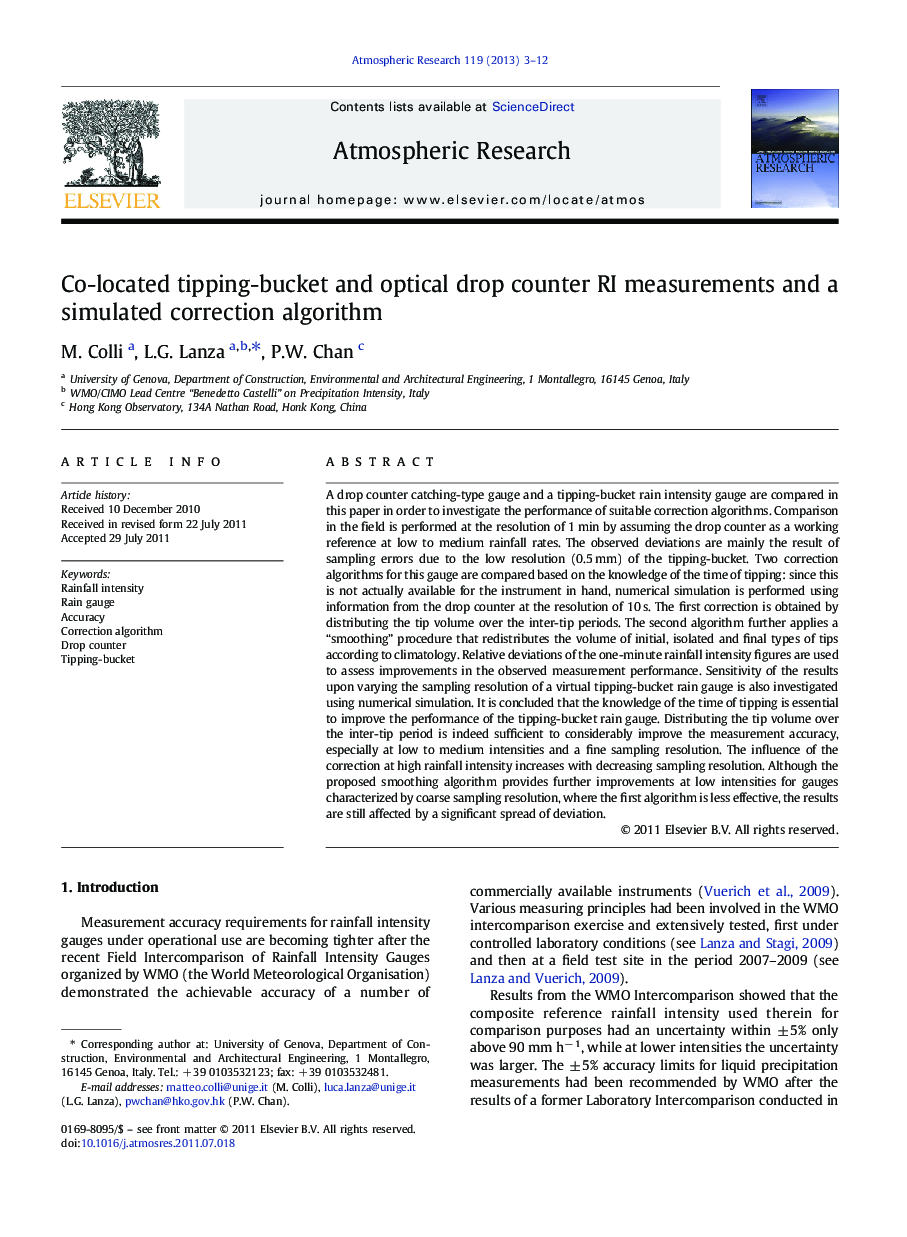| کد مقاله | کد نشریه | سال انتشار | مقاله انگلیسی | نسخه تمام متن |
|---|---|---|---|---|
| 4450153 | 1620546 | 2013 | 10 صفحه PDF | دانلود رایگان |

A drop counter catching-type gauge and a tipping-bucket rain intensity gauge are compared in this paper in order to investigate the performance of suitable correction algorithms. Comparison in the field is performed at the resolution of 1 min by assuming the drop counter as a working reference at low to medium rainfall rates. The observed deviations are mainly the result of sampling errors due to the low resolution (0.5 mm) of the tipping-bucket. Two correction algorithms for this gauge are compared based on the knowledge of the time of tipping: since this is not actually available for the instrument in hand, numerical simulation is performed using information from the drop counter at the resolution of 10 s. The first correction is obtained by distributing the tip volume over the inter-tip periods. The second algorithm further applies a “smoothing” procedure that redistributes the volume of initial, isolated and final types of tips according to climatology. Relative deviations of the one-minute rainfall intensity figures are used to assess improvements in the observed measurement performance. Sensitivity of the results upon varying the sampling resolution of a virtual tipping-bucket rain gauge is also investigated using numerical simulation. It is concluded that the knowledge of the time of tipping is essential to improve the performance of the tipping-bucket rain gauge. Distributing the tip volume over the inter-tip period is indeed sufficient to considerably improve the measurement accuracy, especially at low to medium intensities and a fine sampling resolution. The influence of the correction at high rainfall intensity increases with decreasing sampling resolution. Although the proposed smoothing algorithm provides further improvements at low intensities for gauges characterized by coarse sampling resolution, where the first algorithm is less effective, the results are still affected by a significant spread of deviation.
► A drop counter catching-type gauge and a TBR are compared in the field.
► Deviations are the result of sampling errors due to the low resolution of the TBR.
► Two correction algorithms are compared based on the reconstructed time of tipping.
► The knowledge of the time of tipping does improve the performance of the TBR.
► The proposed smoothing algorithm provides improvements at the lower intensities.
Journal: Atmospheric Research - Volume 119, January 2013, Pages 3–12